Posted by ES Team on 24 January, 2015
camping,
fishing,
get outdoors,
hobbies,
humor,
hunting,
self defense
|
0 comments
|
Read more →
ESLife
Posts in the fishing category
How to Fillet a Fish
Knowing what to do after you catch a fish is an important part of angling. To be a true angler you have to be able to prepare your catch. Learning to Filet your fish is a must for most anglers.

I catch mostly fresh water fish. The fish I filet most are crappie. I may fillet a Bass from time to time but I usually release the Bass I catch. I do love large blue gill, shell crackers and crappie. My favorite fish to eat is a walleye. We don't have walleye here in Alabama but we do have sauger which is related to the walleye. We catch sauger here in in winter and the stay deep. They are great eating.
There is an urban myth that you loose a lot of the meat by filleting. This is not true. You will lose a little but not much and having no bones in your fish makes up for the small loss.
Keep your fish fresh. If you don't have a live well or a fish basket you can keep your fish on ice. This will keep them fresh till you are ready to clean them. You can filet a fish right out of the live well but my experience has been that they filet better after they have been iced down. The knife seems to flow through the meat easier on an iced down fish.
I Always use a filet knife. Filet knives are thin sleek blades made to cut through fish. Any other knife will be to thick and cumbersome. You will end up butchering the meat. I like a Kershaw filet knife. They are great knives and reasonable priced. You can find a nice Kershaw for around $15.00

There are anglers out there that use an electric knife. I guess I am a little old fashioned but my experience has been that a filet knife gives a much better filet than the electric knife.
 Keep your knife sharp. A dull blade is useless when filleting. If your blade is stainless make sure you run it on a steel or ceramic before you use it. People like stainless blades because stainless is rust resistant. The downside to stainless is that stainless does not keep an edge like a carbon blade. So with a stainless blade run it down your steel orceramic before each fish. That will keep it sharp and able to do the job.
Keep your knife sharp. A dull blade is useless when filleting. If your blade is stainless make sure you run it on a steel or ceramic before you use it. People like stainless blades because stainless is rust resistant. The downside to stainless is that stainless does not keep an edge like a carbon blade. So with a stainless blade run it down your steel orceramic before each fish. That will keep it sharp and able to do the job.
It takes a certain amount of touch to fillet a fish but with a little practice you will be filleting as a pro. After all we are not talking about brain surgery here.
To skin or not to skin, I like the skin on most freshwater game fish. Catfish I skin with needle nose pliers. If you decide to keep the skin you will need to scale your fish before filleting. I have found that a metal spoon makes one of the best fish scalers you'll find. You can spend lots of money on fish scalers but none of them store bought scalers will outperform the common kitchen spoon. If you decide to skin your fish I have found that running your blade between the meat and the skin after you have your filet is the easiest and fastest way to remove the skin.
Here are a few pointers when filleting. To really get a good idea on technique take yourself to you tube and watch a few videos on filleting a fish. After you read our suggestions. The suggestions will make a lot more sense after viewing a few videos.
1. Make a deep cut just behind the gills (about halfway through the thickness of the fish).
2. Cut a slit a few inches in length along the top of the fish (the dorsal side). (There is a slightly different technique for y-bone fish like northern pike or muskees.)
3. Using the tip of the knife, separate the flesh from the bones. The fish should open up just like a book.
4. When completely open, finish cutting away the fillet by moving the knife along the spine of the book.
After you are done with your fish you can be good to earth by recycling. The leftover fish parts make great chum, great catfish bait and great fertilizer.
=======================================
Catching Your Own Fish Bait
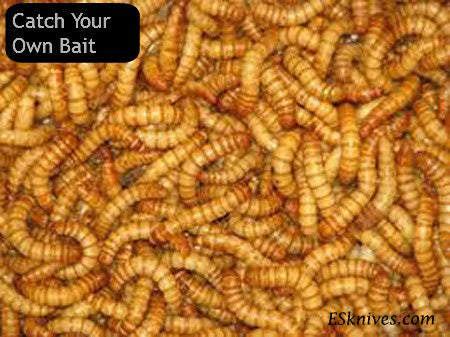
You want to fish with live bait you go to the bait shop and buy some bait. What if you want to catch your own bait. After all you are limited on what types of bait you can buy at the local bait shop. If the end of the world, as we know it, happens you'll have to find your own bait. Here are some tips where to where to find commonly used baits.
Crickets are one of the most common baits. Great for pan fish like bluegills and sunfish. Crickets are pretty easy to find. You can find them in your house, or look outside under a few rocks, maybe in a local wood pile. You can find crickets most of the year somewhere.
Grasshoppers are almost as good as crickets. Finding them is more limited. You can find them in the tall grass during summer and early fall.
Mealworms are a great bait that can be bought at the local bait shop. Mealworms are a beetle larvae. These can't be found easily. If you are interested in cutting out the middleman you will have to raise them on your own. Wax worms, a moth larvae, are on the same level as mealworms and make a great bait.
 Grubs are found in the ground. Just a little digging in a grassy area will turn them up. Some fish will eat them up.
Grubs are found in the ground. Just a little digging in a grassy area will turn them up. Some fish will eat them up.
Night crawlers and earthworms are a staple for catching fish. We all know digging them up is the easiest way to find them. At night we go out with a high powered light and catchthe big crawlers coming out of the ground but you got to be fast. You can always fiddle some worms. I plan to write an article on fiddle worms in the future.
Bass and crappie love minnows. We catch minnows in a seine. Seines are hard in the colder temps because you tend to get wet using a seine. There are many types of nets out there to catch minnows but usually require two arms so I stay away from them. During colder weather is when the old minnow trap comes in out. A minnow trap, some oatmeal, and you can catch all the minnows you need. We use the standard metal mesh trap but I am thinking about getting one of these glass traps.
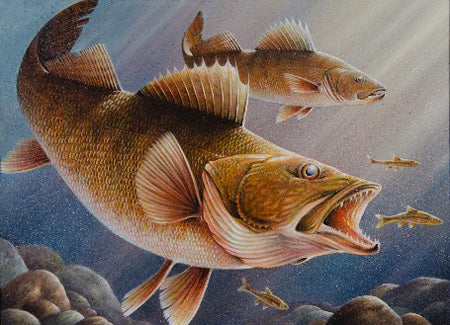 Large Bass, Northerns and Muskies love the Frogs. Frogs are easily found in ponds and lakes. Catching them live is another story. But it can be done. With practice you can have enough frogs for fishing and a tasty dinner.
Large Bass, Northerns and Muskies love the Frogs. Frogs are easily found in ponds and lakes. Catching them live is another story. But it can be done. With practice you can have enough frogs for fishing and a tasty dinner.
Walleyes regard leeches as soul food and walleye is perhaps the best tasting fish ever. The easiest way to catch leeches is to roll up your pants and walk through a swamp. This is effective but not fun. The next best way is to get yourself a big piece of beef liver. Throw it out into a swamp one evening. Go back the next morning and your liver will be full of leaches.
Minnesota 2013 Walleye Stamp
Fishing with live bait is a great way to catch fish. Catching your own bait is rewarding and fun.
Catch and Release: Let my Granddaughter Catch the Big One
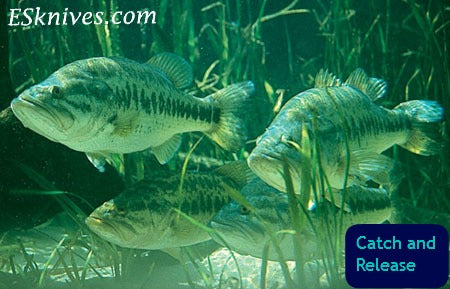
Catch and Release began in 1952. The state of Michigan was experiencing high costs stocking hatchery raised trout. Michigan designed catch and release to reduce the cost. Fast track to 2013; Catch and release is largely promoted to avoid over fishing and ensure the sport of fishing for generations to come.
The ESKNIVES compound is on Guntersville lake. Bass fishing is a big deal here on the lake. From early spring to late fall we have a Bass tournament almost every weekend. If we did not practice catch and release Bass fishing would become a very boring sport.
If you plan to catch and release then learning proper techniques to reduce damage to skin, to scales, and slime layers that make fish vulnerable to fish fungus and skin infections, is essential.
Here are some fast simple rules:
1. Before handling your fish make sure your hands are wet. Dry hands remove the protective slime on fishes skin. Never use gloves or a rag. Gloves and rags can be death sentences for fish.
2. How long can you hold your breath? That is about as long as you should keep a fish out of water. This usually leaves plenty of time to remove your fish from the line, take pictures and return your fish to the water.
3. Be careful removing the hook. Tearing the hook is a sure way to start a fungus. You can purchase a hook remover. I use a pair of thin needle nose. They seem to work better than manufactured hook removers. If the hook is hard to remove the best bet is to push it through and cut off the barb. The hook removes safely and hooks are easily replaced
4.When releasing your fish move your fish backwards and forwards in the water. This moves water through the gills and helps revive your fish. When the fish begins to struggle and starts to swim let the fish go. Most fish are ready to go when placed in the water.
My Granddaughter is not yet old enough to fish. But when she is I want her to have the same thrills I have had landing that big one. It is good to be part of the solution giving us all the chance to enjoy fishing.
That is all I have for now,
One Arm Don
Charming the Fiddle Worms - Fishing Bait
Fiddle worms make excellent bait for catfish, bass, bream, and trout. They are especially valuable because of their length: One worm, broken apart, will easily fill several hooks, and the worms are tough enough to stay securely in place. Charming worms is a southern tradition. Fiddling is still used in certain parts of the southeastern U.S. today, though it probably reached its peak during the 1960’s. Charmers are hard to find now a days.
In North Alabama this is how many of us catch our own bait. Where I come from Fiddling worms is considered a art. First time I saw worm fiddling was when I was around 10 years old. I was a city boy and we were vising my Uncle and Aunt on top of Brindlee Mountian in North Alabama, the foothills of the Appalachian Mountains. My Uncle showed my dad and I how it was done. In minutes we had a bucketful of worms, ready to go fishing.

My Uncle got us a bucket of worms with nothing more than an old rusty handsaw missing a few teeth and a bucket. He told us that the best time to go worming is in the spring but I have found that you can capture worms any time of the year, unless the ground is frozen.
There have been studies that confirmed worm grunters (another name for fiddling) have actually been tricking these worms into thinking they are being chased by its primary predator; moles. That’s why they appear above the ground almost like magic. They are in fear for their lives and quickly crawl from their burrows to escape.
Here is how we do it:
The success of worm charming can often depend on soil conditions, with charmers choosing damp locations or using water to attract the worms. A crucial factor in finding a good site to "play up" the worms is to have good moisture in the soil. Fiddle worms like the earth damp. In dry weather they move down into the lower parts in search of water. The first thing is to look for is good soil.
When you've located an area you believe there may be worms, begin to look for worm casings. Worm casing is another term or worm poop, which are small, round casings that the worms discharge as they munch on the soil. Casings can be found easily among decaying leaves at the base of a young trees.
Once you have found a small sapling, around three inches in diameter, it is time to start fiddling. Cut your sampling and leave around 18" for a the stump. Before you go out cutting peoples trees down, ask for permission.
Take an old wood saw, that the teeth have been dulled, and start fiddling by simply dragging the cutting edge back and forth across the top of the stump. The vibrations that are created travel down the tree's root system, sending tremors down into the earth that jolt the worms to the surface. In good damp ground you'll start seeing worms in five minutes maybe sooner. Dryer soil will take longer. Give it at least 10 minutes before looking for a new site. Just keep playing and worms should appear, they might be as far as 25-30 feet away. Fiddle worms on an average are between 12 and 15 inches long.
When your worms begin to surface, collect them in a bucket. Make sure your bucket has some holes. You don't want your worms to drown. Fill your bucket with dirt. You can keep them in the bucket for up to two months. Keep them watered which means keep them moist. Throw in a little cornmeal every once in a while.
If you can't find a worn out saw, there are other methods of fiddling for bait. Instead of a saw you can use a metal bar and instead of a sapling you can use a wooden stake. Find a roughly 3-foot long wooden stake and pound it about halfway into the ground. Take a piece of flat, or round iron, roughly half as long as the stake and run it across the stake. You'll have to lean into it because you want those vibrations to go deep into the ground. This method will get good results.
There is a technique that involves a chainsaw. Take the chain off your chainsaw. Start your chainsaw and hold it against the ground. This usually brings up buckets of worms. A friend gave me a long metal pole that you plug in and shove it in the ground. I don't know if it works but I have it. I have known people to take a big rock and hit their sapling stump over and over to get worms. This technique is a little to rough for me.
Whatever technique you use it is best to start around sunrise. After 11:00 it is time to give up. My experience has been that temperature does not matter but the ground can't be frozen. You can sprinkle your spot with with water, tea or even beer for a slight edge. Some grunters poke their area with a pitchfork before fiddling. The point is to start fiddling, practice, experiment and create techniques that work for you.

Don't worry about having to many worms. Bait shops and fishing camps love to buy fiddle worms. You may be able to sell the leftovers. 25 worms in a large Styrofoam cup, a few contacts and you are on your way to worm profits. Get the whole family involved. Kids love to fiddle worms. Bring several buckets.
In North Alabama this is how many of us catch our own bait. Where I come from Fiddling worms is considered a art. First time I saw worm fiddling was when I was around 10 years old. I was a city boy and we were vising my Uncle and Aunt on top of Brindlee Mountian in North Alabama, the foothills of the Appalachian Mountains. My Uncle showed my dad and I how it was done. In minutes we had a bucketful of worms, ready to go fishing.

My Uncle got us a bucket of worms with nothing more than an old rusty handsaw missing a few teeth and a bucket. He told us that the best time to go worming is in the spring but I have found that you can capture worms any time of the year, unless the ground is frozen.
There have been studies that confirmed worm grunters (another name for fiddling) have actually been tricking these worms into thinking they are being chased by its primary predator; moles. That’s why they appear above the ground almost like magic. They are in fear for their lives and quickly crawl from their burrows to escape.
Here is how we do it:
The success of worm charming can often depend on soil conditions, with charmers choosing damp locations or using water to attract the worms. A crucial factor in finding a good site to "play up" the worms is to have good moisture in the soil. Fiddle worms like the earth damp. In dry weather they move down into the lower parts in search of water. The first thing is to look for is good soil.
When you've located an area you believe there may be worms, begin to look for worm casings. Worm casing is another term or worm poop, which are small, round casings that the worms discharge as they munch on the soil. Casings can be found easily among decaying leaves at the base of a young trees.
Once you have found a small sapling, around three inches in diameter, it is time to start fiddling. Cut your sampling and leave around 18" for a the stump. Before you go out cutting peoples trees down, ask for permission.
Take an old wood saw, that the teeth have been dulled, and start fiddling by simply dragging the cutting edge back and forth across the top of the stump. The vibrations that are created travel down the tree's root system, sending tremors down into the earth that jolt the worms to the surface. In good damp ground you'll start seeing worms in five minutes maybe sooner. Dryer soil will take longer. Give it at least 10 minutes before looking for a new site. Just keep playing and worms should appear, they might be as far as 25-30 feet away. Fiddle worms on an average are between 12 and 15 inches long.
When your worms begin to surface, collect them in a bucket. Make sure your bucket has some holes. You don't want your worms to drown. Fill your bucket with dirt. You can keep them in the bucket for up to two months. Keep them watered which means keep them moist. Throw in a little cornmeal every once in a while.
If you can't find a worn out saw, there are other methods of fiddling for bait. Instead of a saw you can use a metal bar and instead of a sapling you can use a wooden stake. Find a roughly 3-foot long wooden stake and pound it about halfway into the ground. Take a piece of flat, or round iron, roughly half as long as the stake and run it across the stake. You'll have to lean into it because you want those vibrations to go deep into the ground. This method will get good results.
There is a technique that involves a chainsaw. Take the chain off your chainsaw. Start your chainsaw and hold it against the ground. This usually brings up buckets of worms. A friend gave me a long metal pole that you plug in and shove it in the ground. I don't know if it works but I have it. I have known people to take a big rock and hit their sapling stump over and over to get worms. This technique is a little to rough for me.
Whatever technique you use it is best to start around sunrise. After 11:00 it is time to give up. My experience has been that temperature does not matter but the ground can't be frozen. You can sprinkle your spot with with water, tea or even beer for a slight edge. Some grunters poke their area with a pitchfork before fiddling. The point is to start fiddling, practice, experiment and create techniques that work for you.

Don't worry about having to many worms. Bait shops and fishing camps love to buy fiddle worms. You may be able to sell the leftovers. 25 worms in a large Styrofoam cup, a few contacts and you are on your way to worm profits. Get the whole family involved. Kids love to fiddle worms. Bring several buckets.
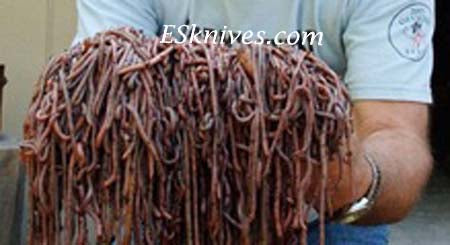
Top 7 Most Unique National Parks


7. Yosemite National Park
California
Best known for its magnificent waterfalls, Yosemite National Park is a shrine for beauty, including deep, rolling valleys, granite and glaciers, and so much more! This vast wilderness is home to grand meadows and vast, ancient sequoias where 7 present-day tribes place their history and roots. 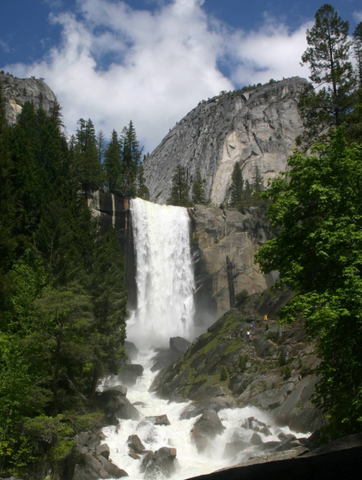
Yosemite offers an incredible variety of things to do including national park norms like biking, hiking, fishing, etc. as well as things unique to the park itself! Try water or winter sports depending on what time of year you’re visiting! There is also extensive bird watching and rock climbing like no other. Learn more about this classic attraction here and remember to get outdoors!
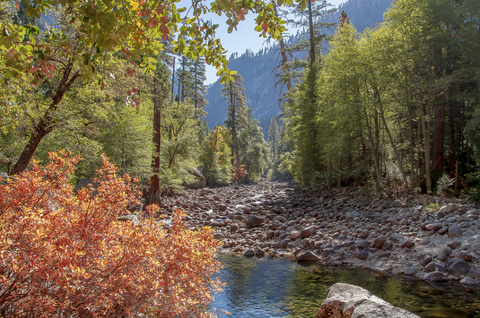
6. Arches National Park
Utah
Arches National Park is a unique dreamlike setting that is a sunset colored sea of mystical sandstone arches; true to its name in every way. These sand deposit left over from ancient, evaporated salt seas create a picture perfect dream setting. Camp under the darkest of desert night skies or discover amazing views of shapes and sizes on 20 miles worth of winding trails that will challenge even the most experienced of hikers. Take a peak at more details of this wonderland here.

There is nothing else like these incredible statues that paint the Utah desert red with cool shapes and sizes; they are truly unlike anything you've ever seen before!

5. St. Croix Island International Historic Site
Maine
Take a short ride from Acadia National Park along Maine’s coastal route one down east to a small site that carries a big history. Before Jamestown AND Plymouth Rock, this area of St. Croix Island housed a new French presence, a colony that like many others, almost didn’t make it. Sharing a border with Canada, this small and sacred island is nestled in the middle of the St. Croix River. So pack a lunch & grab your binoculars for a hike through history! This fragile reveal of the past is must-see.
4. Katmai National Park and Preserve
Alaska

This valley, created by the largest volcanic eruption of the 21st century, sits on the Alaska’s northern peninsula where brown bears quite literally out number people. A place where salmon are pink and plentiful, fishing with one of nature’s fiercest predators isn’t out of the question. 
Katmai is unlike any other national park and although this remote spot is difficult to get to, seeing as you must travel almost exclusively by boat or plane, it is definitely worth it for some of the best opportunities the natural world has to offer! Take a 45- minute Culture Walk with a native ranger, fish for rainbow trout over 30 inches in length, or if danger is more your style, you’re welcome to try bear wrestling… but our money’s on the bear! Visit the website for more details on the adventure of a lifetime… or watch a live stream of Brooks Fall’s bear cam here and watch the bears in their natural habitat.
3. Bighorn Canyon National Recreation Area
Montana, Wyoming
If you’ve never heard of Bighorn Canyon, you’re missin’ out! This national gem is cliff-encased lake just waiting to be discovered! Named after the bighorn sheep that make it their home, this can’t-beat sensation entertains a 71-mile long lake, huge mountains with 1,000 to 2,500 foot cliffs, Peregrine falcons, wild horses, and so much more (if that’s possible)! 
The amazing waters and stories of those who have explored and settled on Bighorn River is what drives people to visit this creation of Yellowtail Dam. The ranches, fourteen different hiking trails, and over all archaeology of Bighorn Canyon is an inspiring awe just waiting to soak you in wonders! If you don’t believe us, check it out for yourself on their website. 
2. Chaco Culture National Historic Park
New Mexico
Don’t be discouraged by the rough terrain and beyond difficult access to Chaco Canyon, the adventure is worth it (& we’re not talkin’ about the shoes)! This World Heritage site is full of amazing history dating back even before Columbus sailed the ocean blue… you know, in 1492. The “Chaco” civilization left behind hundreds of sandstone buildings, impressive for their time & most definitely a must-see!
Today, visitors are able to travel back in time and immerse themselves in American history with guided walks or self-tours. Prepare to be amazed by the many backcountry trails or camp under the most unimaginably dark New Mexico night skies. Trust, this will definitely be one of your best ideas. 
1. Great Smokey Mountains National Park
North Carolina, Tennessee

This famous landmark is number one on our list for a reason! A blanket of forest nestled in between the North Carolina and Tennessee border is home to magnificent wildlife, full of diversity. Not only is the wonder of the world America’s most visited National Park, it is home to the most ancient Southern Appalachian mountain culture.
The Smokies are great for camping, hiking, horseback riding, picnicking and so much more, with marvelous trails and pavilions; not to mention, the views! The best part, it never closes! Feel free to visit 24 hours a day, 365 days a year for FREE. Visit the website to find out more about this national treasure!
Some of our favorite destinations within the park include (but not limited to) Cades Cove, Cataloochee, Clingmans Dome, and Roaring Forks. Meanwhile the most popular activities are things like auto touring, bicycling, fishing, backpacking, waterfall walks, etc. 
Hunting and Fishing is the Life for Me
#GetOutdoors with Extremely-Sharp.
Hunting and Fishing is the life for me and always will be. There is something about being in nature that I think speaks to our soul in a way that nothing else can. I've heard it said that the human spirit needs time in land that is untouched by man and I know that for me that is true.
These photographs are for any of you who love to GET OUTDOORS. That is the message of the Extremely-sharp life...#GetOutdoors.

My goal in life is to be the kind of person my dog thinks that I am.
Check out our Camping and Survival gear.

Some Anglers just have too much time on their hands...

Aromatherapy for hunters.

Teddy Roosevelt quote - No, I'm not a good shot, but I shoot often.
Teddy Roosevelt's thoughts on gun control. [smile]

Do what you love, love what you do.
I can not look at this photo without a touch of jealousy, wanting to be there fishing. What is it about fishing that brings so much peace? It's like yoga, but you get to kill something.

One of the worlds greatest mailboxes.
How often do you think this house gets robbed? | Self defense items for protection

Would you take this shot? Hunting while standing on a horse
There is range hunting...and then there is standing on a horse range hunting. Could you do it?

Got horsepower? This fishing boat is awesome.
Oh hi, is this your boat? I brought beer, can we be friends? | Fillet knives

This right here is why we love our hunting dogs. They love to fish and hunt as much as we do
If you love camping, hiking, fishing, hunting... just exploring the great outdoors - we would love for you to visit our family owned and operated website and get some gear for while you are out on your adventure. Extremely-sharp.com is an e-commerce website out of Alabama that was started by two brothers who have a love of the outdoors and sharp objects. If you want to support small American businesses, shop our website. Our prices are low and you'll be supporting family owned business.
Surviving With Candles
I am constantly looking for simple survival tools.
There is a simple survival tool available to us all. Candles….
Candles are the perfect survival tools. Every good emergency kit and bug out bag should include some emergency candles. Candles are used for everything from lighting a room to providing extra heat in an emergency.
Fans of classic survival books will remember the time it was encouraged to carry around a candle nub for survival purposes. I have been around backpackers all my life. Some of those old backpackers I knew would not go in the woods without their candle. It seems that many people don’t think about the candle much anymore.
Candles are great for providing you with hours of light. In non-windy conditions, a candle can light your way and give you enough light to work. If it is windy, you can rig a wind screen by cutting a piece off an aluminum can or putting the candle inside a clear glass container. Now a days you can go to any outdoor store and buy a candle lantern. They are much lighter than the standard battery lamp.

Copper Candle Lantern
Let's talk about Cooking. A good candle can actually provide enough heat to cook or boil a small amount of water. You won't be able to use your candle nub to grill up a steak, but with a candle nub you can generate enough heat to warm up tea, coffee, soups along with many other types of food and drink. Just find a couple bricks or rocks to make a stand that supports your cook pot. Place the nub under the pot, light it you have dinner. We all know it gets cold in the winter. If you find yourself out in the winter an emergency a candle in your tent will provides some nice extra warmth. It is surprising how much a candle can heat up a small tent. Now that we are mentioning tents, Candle wax works good in the field for seam sealing those pesky leaks that spring up. Lighting Fires in the woods can be hard. It’s a lot easier, and safer to use a candle to light your fires than it is to hold a lighter or match. Light a candle and drip some wax on your tinder or kindling. Light the fire with the candle’s open flame. If you have extra candles you can build the fire around the candle, light your candle and your fire will start with ease.
 Wax prevents rust. You can coat your knives, tools and other equipment with candle wax to prevent them from rusting. A thin coat works well and you can renew it as often as needed. Wax also works as a decent lubricant, just rub your candle. You can even use a thin coat of wax on a hat for waterproofing. The wax won't completely water proof a hat but it will certainly make it water resistant.When using a bow drill place a small flake of wax into the bearing block of a bow drill. As you work your drill it will melt the wax and become slippery. This frees up the top of the drill and focuses the friction at the bottom of the drill.
Wax prevents rust. You can coat your knives, tools and other equipment with candle wax to prevent them from rusting. A thin coat works well and you can renew it as often as needed. Wax also works as a decent lubricant, just rub your candle. You can even use a thin coat of wax on a hat for waterproofing. The wax won't completely water proof a hat but it will certainly make it water resistant.When using a bow drill place a small flake of wax into the bearing block of a bow drill. As you work your drill it will melt the wax and become slippery. This frees up the top of the drill and focuses the friction at the bottom of the drill.
If there is a serious emergency out in the field, candle wax can be used as an adhesive on cuts and wounds much like stitches.
I have never tried this but I have heard that people warm up some wax and mold it around a fish hook that creates a false grub or maggot.
Bottom line is that things seem to be getting tougher. Emergency candles are long lasting, provide safe emergency lighting and are easy to store in survival kits. Power outages are a much more common occurrence than they used to be. Power Outages can occur from wind, snow storms, excessive power demands, floods and earthquakes. We never know when a disaster will occur. Terrorism is on the increase along with floods and hurricanes. A small investment now can mean the difference between life and death in the future.

Categories:
Recent posts
- Weekly Knife Giveaway - Claim your Entry19 February, 2016
- Survival with Bandanas23 November, 2015
- Win a trip to go support our troops09 October, 2015
- NASA Released Truly Breathtaking New Footage Of Earth in 4K13 August, 2015
- Kickoff to Summer - get outdoors19 June, 2015
- Stock Photos - group 707 June, 2015
- Stock Photos - group 607 June, 2015
- Stock Photos - group 507 June, 2015
- Stock Photos - group 407 June, 2015
- Stock Photos - group 306 June, 2015







